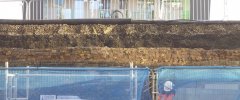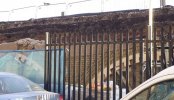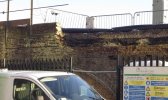The street view below (sorry about the length) from Google Maps shows what condition the wall was in.
Cantilevered refuges (leaning!). Soft brickwork repaired, surface Portand cement pointing, the inner lime mortar probably gone, external guard rails affixed, etc.
There must be many more like it.
WAO

 www.google.co.uk
www.google.co.uk
Cantilevered refuges (leaning!). Soft brickwork repaired, surface Portand cement pointing, the inner lime mortar probably gone, external guard rails affixed, etc.
There must be many more like it.
WAO
Google Maps
Find local businesses, view maps and get driving directions in Google Maps.





